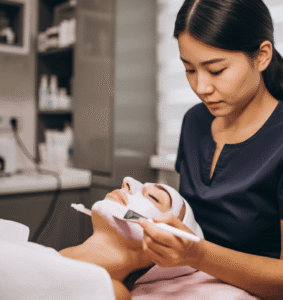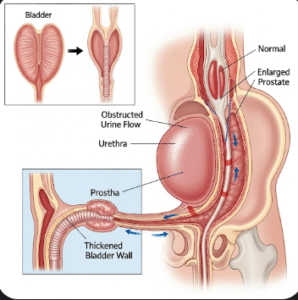What it is
Fetal growth monitoring is the medical process of tracking a baby’s development inside the womb throughout pregnancy. The goal is to ensure that the fetus is growing at a healthy rate and that any irregularities are detected early.
👩⚕️ Core elements of fetal growth monitoring include:
- 🖥️ Ultrasound scans – measuring head, abdomen, and femur length
- 🩸 Blood flow studies (Doppler) – checking placenta and umbilical cord circulation
- 💓 Fetal heart rate monitoring – ensuring proper oxygen supply
- 📊 Growth charts – comparing fetal measurements with standard ranges
In Korea, fetal monitoring is part of routine prenatal care and is performed at structured intervals, typically during each trimester.
Why it’s done
Monitoring fetal growth is crucial for ensuring a healthy pregnancy outcome.
🔹 Reasons why fetal growth monitoring is essential:
➡️ Detecting growth restrictions – identifying intrauterine growth restriction (IUGR) early
➡️ Identifying macrosomia – monitoring for overly large babies, often linked to gestational diabetes
➡️ Assessing amniotic fluid levels – too little or too much fluid can be dangerous
➡️ Monitoring multiple pregnancies – ensuring each baby develops normally
➡️ Guiding delivery decisions – deciding between vaginal birth or C-section for safety
In Korea, doctors emphasize that early detection saves lives, and advanced monitoring ensures better maternal and neonatal outcomes.
Alternatives
While medical monitoring is the gold standard, some supportive approaches may complement fetal growth tracking.
🔸 Complementary methods include:
- 🧘 Prenatal yoga & breathing exercises – improving blood flow and oxygen supply
- 🥗 Balanced nutrition – ensuring adequate intake of protein, iron, calcium, and folic acid
- 📋 Self-tracking – mothers keeping records of fetal kicks and movements
- 🌍 Digital apps – pregnancy monitoring tools that help track growth patterns (used widely in Korea)
⚠️ Important note: These methods are supportive only and cannot replace clinical fetal monitoring, especially in high-risk pregnancies.
Preparation
Before fetal growth monitoring appointments, mothers should prepare properly to ensure accurate results.
✔️ Preparation steps:
➡️ Drink water before ultrasounds for clearer imaging
➡️ Keep a record of symptoms – reduced movements, abdominal pain, or unusual discharge
➡️ Bring previous medical test results and scan reports
➡️ Maintain a healthy lifestyle – balanced diet, hydration, and moderate physical activity
➡️ Prepare questions for the doctor (e.g., growth milestones, safe weight gain)
In Korea, many hospitals provide digital tracking apps, allowing mothers to upload and share data with doctors in real time.
How it’s done
Fetal growth monitoring in Korea involves a series of medical procedures tailored to the pregnancy stage.
🩺 Key methods include:
- ✅ First-trimester scan (6–12 weeks): Confirms heartbeat, measures crown-rump length
- ✅ Second-trimester scan (18–22 weeks): Detailed anomaly scan, checking organs and growth patterns
- ✅ Third-trimester scans (28+ weeks): Monitoring weight, placenta function, and blood flow
- ✅ Doppler ultrasound: Checks oxygen and nutrient supply through placenta and cord
- ✅ Non-stress test (NST): Monitors fetal heart rate response to movement
- ✅ Growth chart plotting: Comparing baby’s progress with international and Korean reference charts
💡 Unique in Korea: Many hospitals use 4D ultrasound imaging, providing clear, real-time visuals of the baby. Parents often receive digital copies and videos, making it both medical and emotional reassurance.
Recovery
Fetal growth monitoring is a non-invasive process, so recovery usually means adapting lifestyle based on results.
🟢 Post-monitoring steps include:
- 🥗 Following dietary advice if baby is underweight or overweight
- 💤 Rest and stress management – crucial for fetal growth
- 💊 Medication compliance – insulin, iron, or supplements if prescribed
- 🧘 Light physical activity – improving blood circulation and oxygen delivery
- 💬 Frequent follow-ups if growth concerns are detected
In Korea, hospitals often offer nutritional counseling and prenatal classes after each monitoring session to guide mothers in maintaining optimal health.
Treatment options in Korea
South Korea is renowned for its advanced maternal and fetal healthcare systems. Expectant mothers have access to cutting-edge monitoring technologies and expert specialists.
🇰🇷 Options for fetal growth monitoring in Korea include:
➡️ Public hospitals – affordable monitoring supported by the National Health Insurance Service
➡️ Private women’s clinics – luxury facilities, shorter wait times, personalized attention
➡️ University hospitals – ideal for high-risk pregnancies needing advanced monitoring
➡️ Maternity centers – combining prenatal check-ups, delivery, and postnatal care
🌟 Highlights of fetal growth monitoring in Korea:
- ✅ Government support: Subsidies for ultrasounds and essential tests
- ✅ State-of-the-art technology: 3D/4D ultrasound, Doppler studies, fetal echocardiograms
- ✅ Multidisciplinary care: Collaboration between obstetricians, nutritionists, and neonatologists
- ✅ Holistic approach: Nutrition, exercise, and mental health support integrated into care
- ✅ International patient services: English-speaking staff and global care standards in major hospitals
✅ Final Note:
Fetal growth monitoring in Korea is more than just checking size—it is a comprehensive medical process that ensures the baby is developing in the safest possible environment. With advanced imaging, structured schedules, and holistic care, Korea offers expectant mothers confidence, safety, and reassurance throughout their pregnancy journey.













